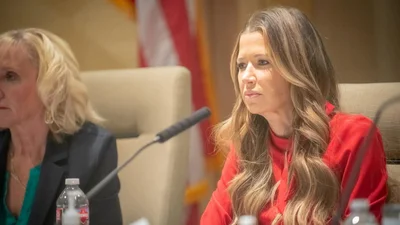As back-to-school season draws near, parents across New Mexico are reading the latest national statistics and asking one simple question: why?
Why is New Mexico ranked dead last—51st in the nation—for education yet again? Why can 89% of our eighth graders not do math at grade level? Why are three out of four third graders unable to read proficiently? Why are more and more families turning to alternative education? And the most important question of all: does it have to be this way?
The answer is no. It doesn’t.
We are not last because we’re poor, rural, or diverse. Other states face the same challenges—and they’ve risen. We’re last because our leaders have chosen adult comfort and union priorities over student outcomes. We are last because the system is built to protect bureaucracy, not to deliver results.
Consider Louisiana. In 2019, their fourth-grade reading scores were 50th in the nation. This year, they’re 16th. Their eighth-grade reading scores jumped 18 places in the same period. Or look at Mississippi—once the national punchline for low-performing schools, it now ranks ninth in the country for fourth-grade reading. These are major turnarounds that happened because those states had the courage to put students first.
They implemented the science of reading. They retrained every K–3 teacher in phonics-based instruction rooted in how children actually learn to read. They passed laws requiring that students be able to read proficiently before advancing to the fourth grade, and they backed those standards with real support: summer reading camps, high-dosage tutoring, and targeted interventions. They deployed trained reading coaches into classrooms. They used regular literacy screening to catch students before they fell too far behind. And they didn’t just pilot these programs—they implemented them systemwide, with urgency and consistency.
New Mexico can do the same. In fact, we did. During the Martinez administration, our state implemented bipartisan reforms: a third-grade reading gate, performance-based teacher evaluations, science-based early literacy initiatives. But those efforts were ultimately dismantled by the Lujan Grisham administration, under intense pressure from teachers unions. Since then, we’ve walked backward. We eliminated school accountability grades. We scrapped teacher evaluations tied to student growth. We rejected basic reading proficiency standards. The result? Eight consecutive years at the bottom, while other states passed us by.
We can’t spend our way out of this. New Mexico already invests more per student than Mississippi or Louisiana. What we lack isn’t funding—it’s follow-through. It’s the political courage to prioritize students over systems, and children over adult interests. Our students don’t need more promises. They need results.
The education establishment in New Mexico has had decades to get this right. They haven’t. And now, it’s time for a new coalition of parents, educators, and lawmakers to step up and say: no more. Our kids deserve classrooms where reading is mastered, math is conquered, and excellence is expected—not excused. They deserve to know we believe they can learn, and we will do what it takes to help them get there.
Other states have proven that dramatic improvement is possible. If Mississippi can go from 49th to 9th, New Mexico can too. But first, we must stop pretending that low performance is inevitable. It isn’t. It’s a consequence of decisions made by those who put politics ahead of progress.
Dead last is a choice. And it’s one New Mexico doesn’t have to keep making. Not if we’re finally willing to choose better—for our kids, our future, and our state.
Jodi Hendricks is the executive director of the New Mexico Family Action Movement. She is also a licensed mental health counselor and a native of Albuquerque. She holds degrees from Bob Jones University and Wayland Baptist University and advocates for parental rights, religious freedoms, and family-centered policies.








